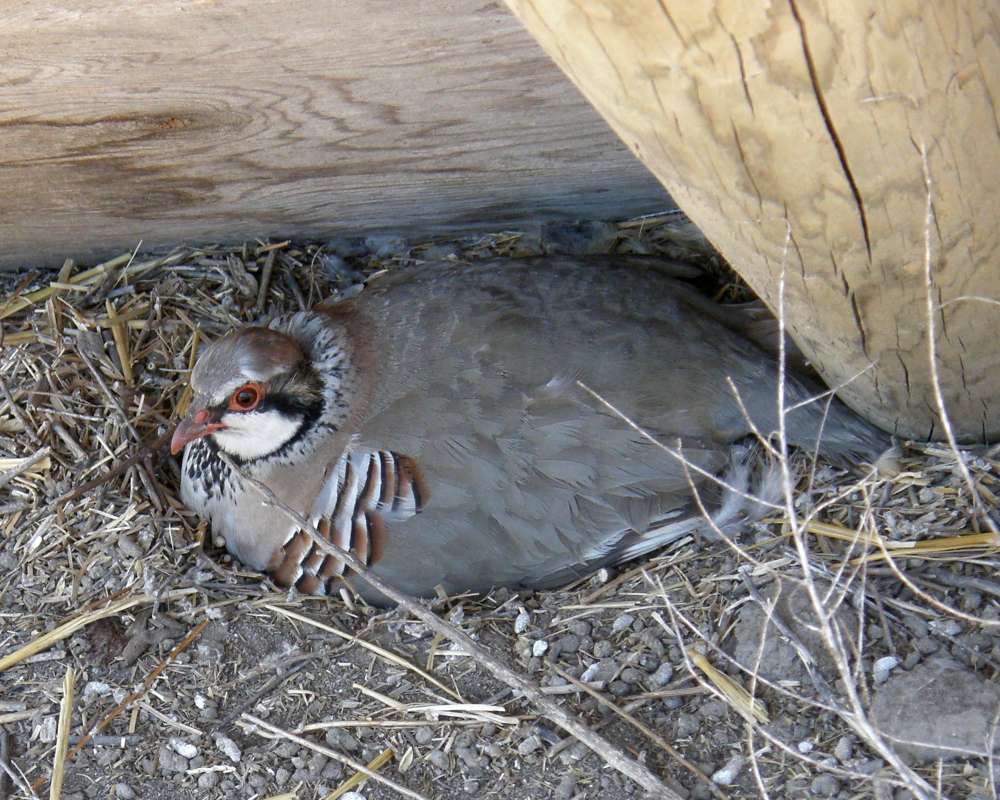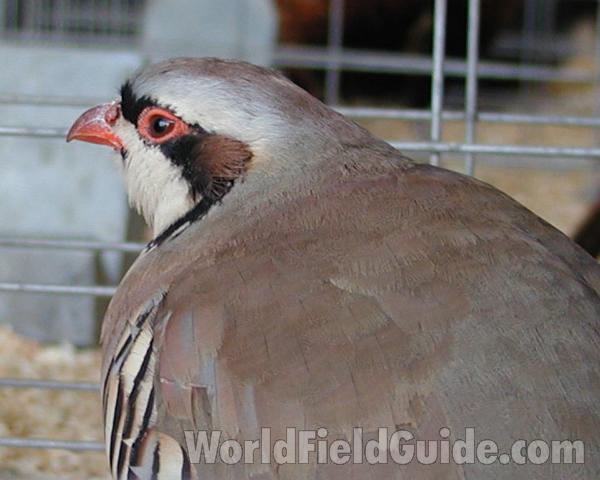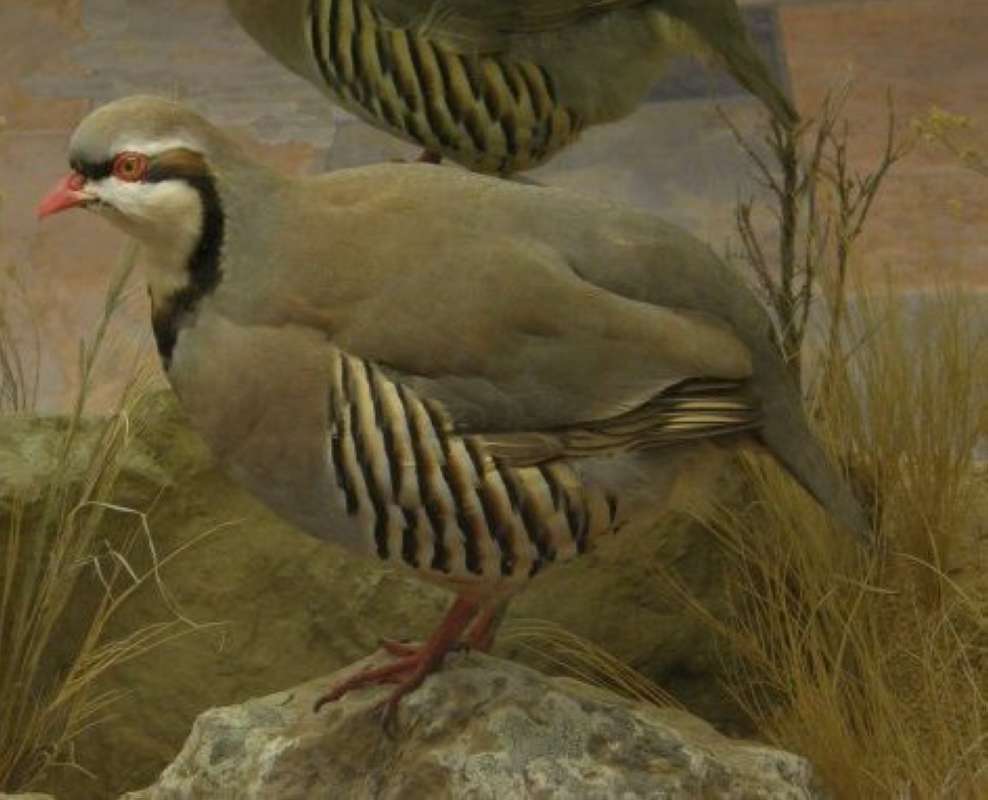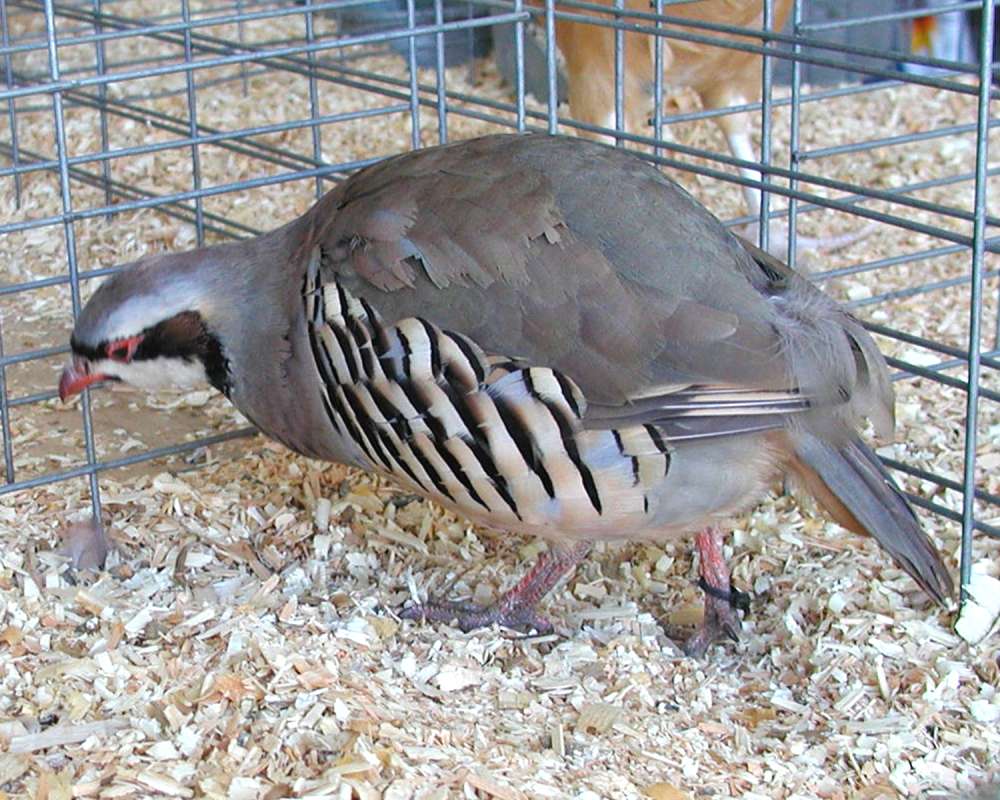SPECIES INFO
Chukar Partridge (Alectoris chukar) is found across northern Eurasia. This 13 inch plus partridge has a black line from the base of the bill through the eye and down the side of the neck. The throat is pale to white.
The Howard and Moore checklist of 2003 lists 14 subspecies. We list just a few of them. The subspecies kleini is found from SE Bulgaria to northern Greece and east through northern Turkey to the Caucasus. The subspecies kurdestanica is found from SE Turkey to northern Syria, northern Iraq, and northern Iran. The nominate subspecies, ssp chukar, is found from the lower Himalayan area to Nepal. The subspecies pubescens is found in eastern China.The partridge genus Alectoris is found primarily in Eurasia, but this genus is found as far south as Arabia and several North African countries. There are 7 species in the genus, but several of them are rich in subspecies. These partridges are about 13-15 inches in length. The birds have black vertical stripes on a pale background on their flanks (side of breast). The front of the neck is usually pale and frequently white.
Partridges and Old World Quails (Family Perdicidae) are a large group of birds that are frequently combined into the Pheasant Family. (Some authors place about 105 species in the Old World Quail group.) To simplify searches, we have kept this as a separate family. We list a few of the better known genera: Alectoris(7), Francolinus(44), Coturnix(9), and Arborophila(27).
Fowl group (Galliformes order) contains the various chickens and turkey-like birds of the world. There are about 240 different species of fowl known. Many of the wild species are endangered. Several species such as the domesticated chicken and turkey are main food sources in the world. Most fowl are grain eaters and spend a good portion of their life searching for food on the ground. Select species have been domesticated for their beauty and/or edibility, others are considered good game birds.
Aves contains about 8,650 different species of living birds known to science. Each year about one new species is discovered in some remote rain forest or remote island. In addition, scientists have been raising many subspecies to full species status which may raise the species count to 10,000. Birdlife recognizes 10,027 species as of 2011.
However, each year about one species goes extinct. The rate of extinction is increasing, and the rate of new discovery is decreasing, so that the number of bird species will soon begin to decline rapidly. Although different taxonomists would organize the birds differently, there are approximately twenty-seven orders of birds. These orders are broken down into about one hundred and fifty-five different families.
Recent research of the genetic structure of some of the shore birds and owls would indicate that the present organization of orders and families should have some modification.
The birds are a worldwide group of animals that are characterized by having the front limbs modified into wings that are used for flying. Perhaps the most unique feature of the birds is the feathers. These feathers are made up of a central support called a quill and a series of small filaments that are hooked together as barbs.
For many years it was believed that Archaeopteryx discovered in Bavaria was the oldest bird from about 150 million years ago. However, in l986, Sankar Chattterjee, a Texas paleontologist, reportedly discovered a bird in the genus Protoavis that lived about 225 million years ago.
When this project was begun in 1978, we used Austin & Singer for bird taxonomy. Since then, we have adopted many changes, but have kept some older concepts that are still found widely in the literature. Recently, we have used Clements and Howard & Moore. Very recently, we have used Monroe and Sibley for the higher taxonomy of the perching birds.
Backboned Animals (Phylum Chordata) are the most advanced group of animals on earth. These animals are characterized by having a spinal cord or backbone. Most members have a clearly defined brain that controls the organism through a spinal cord. Fish, amphibians, reptiles, birds, and mammals are in this phylum.
Currently, some taxonomists believe that the fish should be divided into two groups (sharks and regular fishes) and that there are some other primitive groups in the phylum such as hagfish or lampreys.
Animal Kingdom contains numerous organisms that feed on other animals or plants. Included in the animal kingdom are the lower marine invertebrates such as sponges and corals, the jointed legged animals such as insects and spiders, and the backboned animals such as fish, amphibians, reptiles, birds, and mammals.








